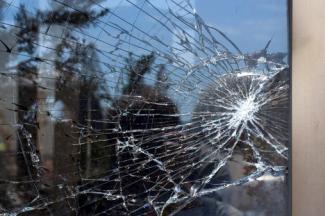
Instructions
Do the preparation exercise first. Then read the text and do the other exercises.
The Facebook party that became a riot
It began as a plan for a very normal 16th birthday party. Merthe Weusthuis wanted a quiet celebration with a small group of friends in her family home in the small Dutch town of Haren. Like many teenagers, she decided to send out invitations via a social network site. But Merthe made one big mistake: she used open-access settings on Facebook, so it wasn’t just her friends who could see details of the event, lots of strangers could too.
The number of invitation acceptances quickly snowballed into an avalanche. Not marking the event as ‘private’ meant the electronic invitation was eventually seen by 240,000 people, of whom 30,000 confirmed online that they planned to attend. To make matters worse, an unauthorised campaign was launched to promote the party by means of a dedicated website and Twitter account, which received hundreds of thousands of hits. The party become known as ‘Project X Haren’ after the 2012 American film Project X in which three high school students throw a birthday party that spins out of control. Video trailers for Merthe’s party were produced, with scenes from Project X edited in, and they were posted on YouTube. T-shirts featuring Merthe’s face were also made, all without her knowledge or consent.
Even after Merthe’s parents had cancelled the party, the publicity didn’t stop. Local media reported on the forthcoming event and teenagers turned up to have their pictures taken outside the Weusthuis family home. On the evening the party was to have taken place, about 5,000 teenagers began gathering in Haren, many outside the Weusthuis house. When it became clear that there was nothing to gatecrash, violence broke out and 500 riot police equipped with helmets, shields and batons were brought in to control the crowd. Shops in the centre of Haren were vandalised and looted, journalists were attacked, cars were set on fire or overturned and street signs and lamp posts were damaged.
However, Facebook was also involved in the clean-up effort in the days after the riot. A group called ‘Project Clean-X Haren’ was set up to gather and organise volunteers. Another group named ‘Suspect-X Haren’ was created to help police identify and arrest the rioters by sharing photos and videos of the event.
A number of other 'Facebook parties’ have spiralled out of control, including the 16th birthday party of British teenager Bradley McAnulty in April 2012. Bradley had not posted details of the event on the internet, and had been careful to ask his friends not to, but somehow the news leaked out and appeared on Blackberry Messenger as well as Facebook. More than 400 gatecrashers invaded his family home in Poole, Dorset, causing extensive damage.
Is it a good idea to use social media to organise a party? Why or why not?

Comments